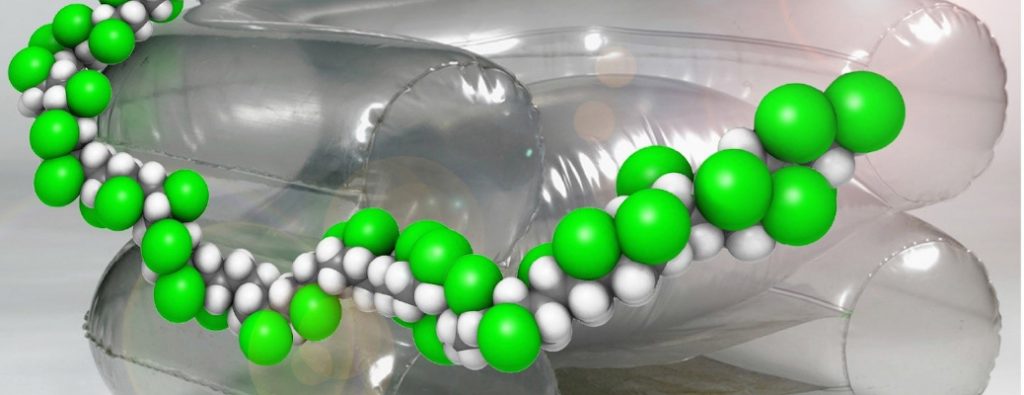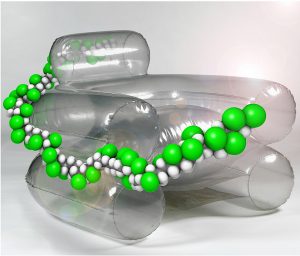Tjaša Rijavec, Matija Strlič and Irena Kralj Cigić recently published the invited feature paper “Plastics in Heritage Collections: Poly(vinyl chloride) Degradation and Characterization” in Acta Chimica Slovenica.
Museums and galleries house significant collections of objects and contemporary art made of plastic materials, many of which undergo rapid material change. Degradation results in visible discolouration, stickiness and cracking and is multi-stage process that includes HCl elimination, formation of conjugated polyenes and cross-linking. Studies in heritage collections have revealed that, apart from HCl, PVC objects emit 2-ethylhexanol and other volatile degradation products, however, there is currently no indication that HCl is emitted at indoor conditions.
The main degradation factors for many plastics are still unknown and may differ greatly. Their identification and their contribution to the overall rate of degradation of PVC is crucial for successful mitigation of long-term degradation. While the initial PVC degradation processes are relatively well-understood, being of industrial interest, plastic objects in museums are often past their intended lifetime as consumer plastics, from a polymer scientist’s point of view.
Unfortunately, this resulted in a lack of systematic research of advanced stages of material deterioration at indoor conditions. Such research is urgently needed in order to enable conservators and collection managers to make informed decisions regarding storage, display and cleaning of museum PVC objects. So far, there have been very few studies on the PVC degradation at low temperatures. The mechanism of degradation, which can be different at the conditions of accelerated degradation at higher temperatures, has to be considered. For example, the degradation of museum PVC objects could be described by a dose-response function based on experiments carried out close to indoor conditions.
In this review article, the following gaps in the understanding PVC degradation relevant to conservation and collection management have been identified:
- Degradation at temperatures below Tg
- The role of plasticizers in the process of PVC degradation, the role of plasticizer compatibility and the influence of its migration
- Plasticizer migration and surface accumulation
- HCl elimination and emission at temperatures of storage and display
- Combined influence of temperature, relative humidity, pollutants and air velocity on the degradation of PVC (damage function).



Yеs! Finally someone writes about chloгide.